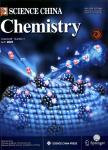版权所有:内蒙古大学图书馆 技术提供:维普资讯• 智图
内蒙古自治区呼和浩特市赛罕区大学西街235号 邮编: 010021

作者机构:The Institute for Advanced StudiesWuhan UniversityWuhan 430072China Beijing National Laboratory for Molecular SciencesBeijing 100190China Key Laboratory of Materials Processing and Mold(Ministry of Education)Zhengzhou UniversityZhengzhou 450002China Department of Materials Science and EngineeringMonash UniversityAustralian SynchrotronClaytonVictoriaAustralia Institute of Materials for Electronics and Energy Technology(i-MEET)Friedrich-A lexander-Universitat-Erlangen-NiirnbergErlangenGermany
出 版 物:《Science China Chemistry》 (中国科学(化学英文版))
年 卷 期:2020年第63卷第10期
页 面:1449-1460页
核心收录:
学科分类:08[工学] 080502[工学-材料学] 0805[工学-材料科学与工程(可授工学、理学学位)]
基 金:supported by the National Natural Science Foundation of China(21702154,51773157) the opening projects of Key Laboratory of Materials Processing and Mold and Beijing National Laboratory for Molecular Sciences(BNLMS201905)
主 题:all-polymer solar cells polymer acceptor absorption coefficient energy loss mechanical stability
摘 要:The field of all-polymer solar cells(all-PSCs)has experienced rapid development during the past few years,mainly driven by the development of efficient polymer ***,the power conversion efficiencies(PCEs)of the all-PSCs are still limited by insufficient light absorption of the donor/acceptor blend and large energy loss in *** herein designed a polymer acceptor PYT1 constructed n-type molecular acceptor Y5-C20 as the key building block and blended it with a polymer donor PM6 to obtain an all-polymer photoactive *** optimized PM6:PYT1 all-PSCs achieved a record higher PCE of 13.43%with a very low energy loss of 0.47 eV and a photoresponse of up to 900 nm compared with the Y5-C20 based device with a best PCE of 9.42%.Furthermore,the PCEs of the PM6:PYT1 all-PSCs are relatively insensitive to the 1-chloronaphthalene(CN)additive contents and active layer *** results also highlight the effect of CN additive on PM6:PYT1 morphology,i.e.,charge generation,and transport find an optimized balance,and radiative and non-radiative loss is simultaneously reduced in the *** work promotes the development of high-performance polymer acceptors and heralds a brighter future of all-PSCs for commercial applications.